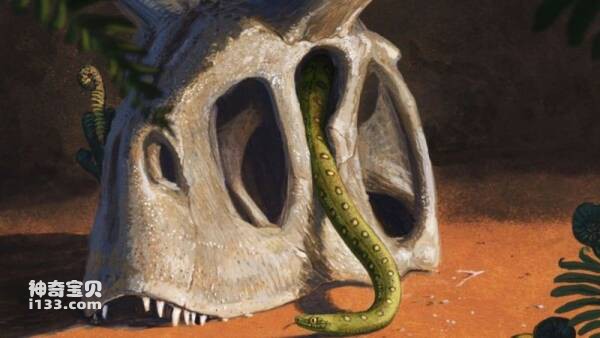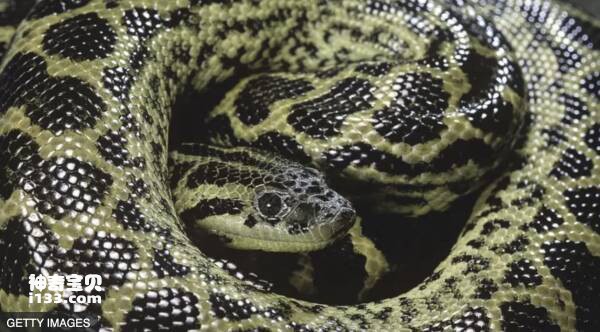A latest British natural science research found that the reason why modern snakes can successfully survive and reproduce around the world must be thanks to the meteorite, an alien object that hit the earth 66 million years ago and exterminated most species, including dinosaurs. Scientists say that at a time when most species on earth were facing extinction, a few species of snakes could live in burrows underground, sleep for long periods of time, and endure hunger and thirst. They eventually had the opportunity to evolve into the more than 3,000 species found today. Snakes of the world.

Snakes are now found on all continents of the world except Antarctica
Geological and archaeological evidence shows that about 66-65 million years ago, at the turn of the Cretaceous and Paleogene periods, a meteorite struck near the Gulf of Mexico in today's North America, triggering major earthquakes, giant tsunamis and wildfires almost all over the world. What was left was the darkness that covered the sky with dust and lasted for decades.
Research shows that 76% of the earth’s animal and plant species were wiped out at that time. However, in the mass extinction of species on Earth, a small number of mammals, birds, small amphibians, reptiles and fish survived against all odds and began to reproduce and expand after the disaster.

Artist's imagination of how ancient snakes survived based on scientific findings
The star of disaster turns into the star of fortune
Dr Catherine Klein, who led the study at the University of Bath in the UK, said: "In that environment where the food chain collapsed, some snakes not only survived but thrived, and began to expand to other continents and continents, adapting to the new environment there.”
"Without the help of meteorite impacts, it is unlikely that the living space of snakes would have expanded to what it is today."
According to reports, when the meteorite hit Mexico, the ancient snakes were not much different from modern snakes. They also relied on crawling and swallowing prey to survive. However, the surviving snakes had special features that most other species did not have, such as the ability to go without food or water for up to a year and the ability to hunt in the dark. In addition, the surviving snakes at that time mainly lived underground or in dense rain forests, so that on the one hand they could avoid fires and harsh external environments, and on the other hand they could also obtain scarce water.
With most of their natural enemies or other possible food competitors eliminated, surviving snakes can gradually migrate to most of the world's continents and multiply and evolve into more species. During the migration and evolution of snakes, giant snakes began to appear in places with suitable living environments, such as giant pythons in the Southeast Asian rainforests and giant sea snakes up to ten meters long in some sea areas.

Researchers at the University of Bath have drawn a framework for the evolutionary history of modern snakes by analyzing the genetic differences between fossils and snakes.
Mass Extinction and the New Age
The latest findings by British scientists were published in Nature Communications. Research shows that all modern snakes can trace their origins to the devastating meteorite impact that occurred 66 million years ago. The existing snakes in the world—from grass snakes, tree snakes, sea snakes, rattlesnakes, cobras to rainforest pythons—all differentiated and evolved after that catastrophe.
Scientists say that any event in the history of natural evolution that leads to the extinction of more than half of all species can be defined as a mass extinction. Research shows that the earth has experienced at least five mass extinction events so far:
The late Ordovician or the transition period between the Ordovician and Silurian periods (445 million years ago to 443 million years ago);
Close to the Devonian-Carboniferous transition period (375 million years ago to 360 million years ago);
Permian-Triassic transition period (250 million years ago);
Triassic-Jurassic transition period (200 million years ago);
And more people are familiar with the "mass extinction of dinosaurs" in the Cretaceous-Paleogene period 66 million years ago.
Dr Nick Longrich from the Milner Center for Natural Evolution at the University of Bath pointed out that after each mass extinction, species on the earth will usher in an era of earth-shaking "comprehensive innovation".
Snakes are one of the most successfully evolved species on earth today. Their "footprints" cover all continents except Antarctica, and they exist in almost all ecological environments from deserts to oceans. The smallest snake species is only a centimeter long, and the largest snake species is as long as A few meters.
Snakes also play an important role in the ecological chain, especially in helping humans control the population of "pests" such as rats. However, some snake species are at risk of extinction due to their overlapping habitats with humans.
animal tags:
We created this article in conjunction with AI technology, then made sure it was fact-checked and edited by a Animals Top editor.